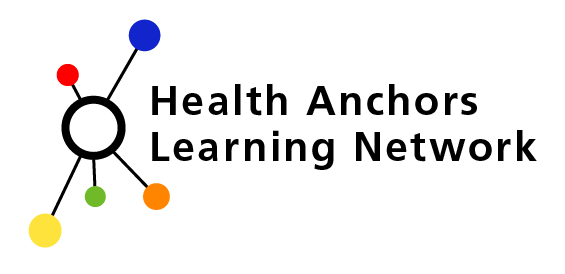Workforce gaps and community needs: where the Venn diagram meets
Health Anchors Learning Network
In our recent HALN learning sets, and at some external events, one theme has come up again and again: the desire to find ways to fill vacancies within the NHS workforce, and tackle local unemployment at the same time - recruiting local people into the health and care workforce. In particular, anchor leaders we are working with want to find routes into employment for groups who experience intersecting inequalities, and are most excluded from the labour market.
But there are a variety of challenges that arise when trying to tackle this challenge in practice:
Data and insight: we know that successful recruitment and outreach requires a high level of targeted work, but at a local level, we don’t always have good quality data on who or where unemployment is concentrated. For example, whether it is concentrated in particular age or ethnic groups, or particular locations.
Certainty over long term roles: one of the things we have learnt from anchor organisations in North America is that long term partnerships with higher education colleges and universities can be one way to build a pipeline of talent, and train for new roles that will become a significant part of your future workforce. But, some of the biggest recent recruitment drives into the NHS in recent years (e.g. the Additional Roles Reimbursement Scheme roles) only have short term funding, and it is not clear whether they will exist in a few years time, so there is little incentive to invest in long term recruitment.
NHS recruitment processes: time and time again people describe the barriers that the application process for NHS roles presents, particularly for people who may have language barriers, lack of access to documentation, or not have applied for jobs through such a formal process before.
In our work with anchors across the UK, we have seen a growing bank of innovative practice which others can learn from to inform their work:
Partnerships: voluntary sector partners, higher education and university anchors, as well as Housing Associations are well placed to support health anchors engage with communities they might not have direct reach into (see HALN’s webinar series with the Housing Associations’ Charitable Trust). They often run training, skills and pre-employment programmes, and have experience supporting those who are most excluded from the workforce. To explore what we have learned from non-health partners around employment, skills and workforce, you can download this simple guide and read this blog.
Open days and direct engagement: some health anchors have become much more proactive in how they engage with local jobs fairs, and also run open days to give people more of an insight into the range of different roles available within the NHS. For example, West London NHS Trust has run open days to encourage applications from refugees and Waltham Forest College has worked on recruitment pathways for prison leavers and homeless people.
Tailored recruitment campaigns for particular groups. For example, Somerset Integrated Care System has created Sector Based Work Academy Programmes (SWAPs) programme to focus on supporting people who are going through a redundancy process, and they have also created bespoke recruitment programmes for Ukrainian refugees (Welcome Hubs), underemployment (NHS Reservists) and more rural residents (micro-provider networks). Dorset County Foundation Hospital Trust has done some great work on its Kickstart scheme for 16-24 year olds, which you can read more about here.
Working with your existing staff: many employees will be local residents, and their networks, friends, neighbours and families may well be potential recruits for the NHS. Consider what kind of local campaigns, such as ‘refer a friend’ initiatives, could be devised to help use the NHS’s biggest asset - its existing staff - to tackle the twin aims of filling vacancies and tackling local unemployment.
The intersection between workforce gaps and community needs presents both challenges and opportunities. By forging innovative partnerships, crafting tailored recruitment campaigns, and tapping into the potential of existing staff, health anchors can create a more inclusive and empowered healthcare workforce.
In May join us in sharing fantastic resources on how health anchors can use their role to tackle unemployment using #AnchorEmployment over Twitter and LinkedIn
